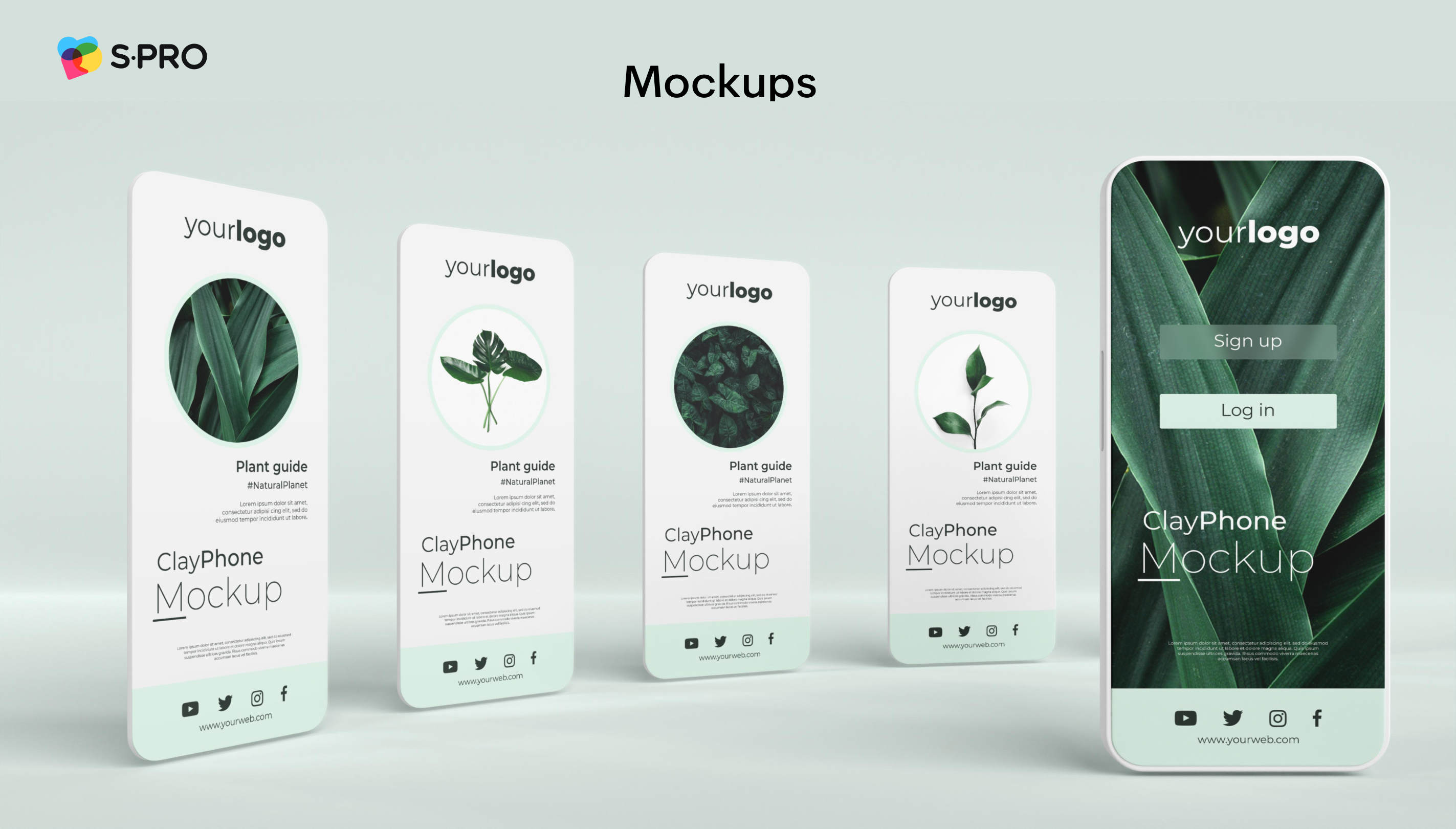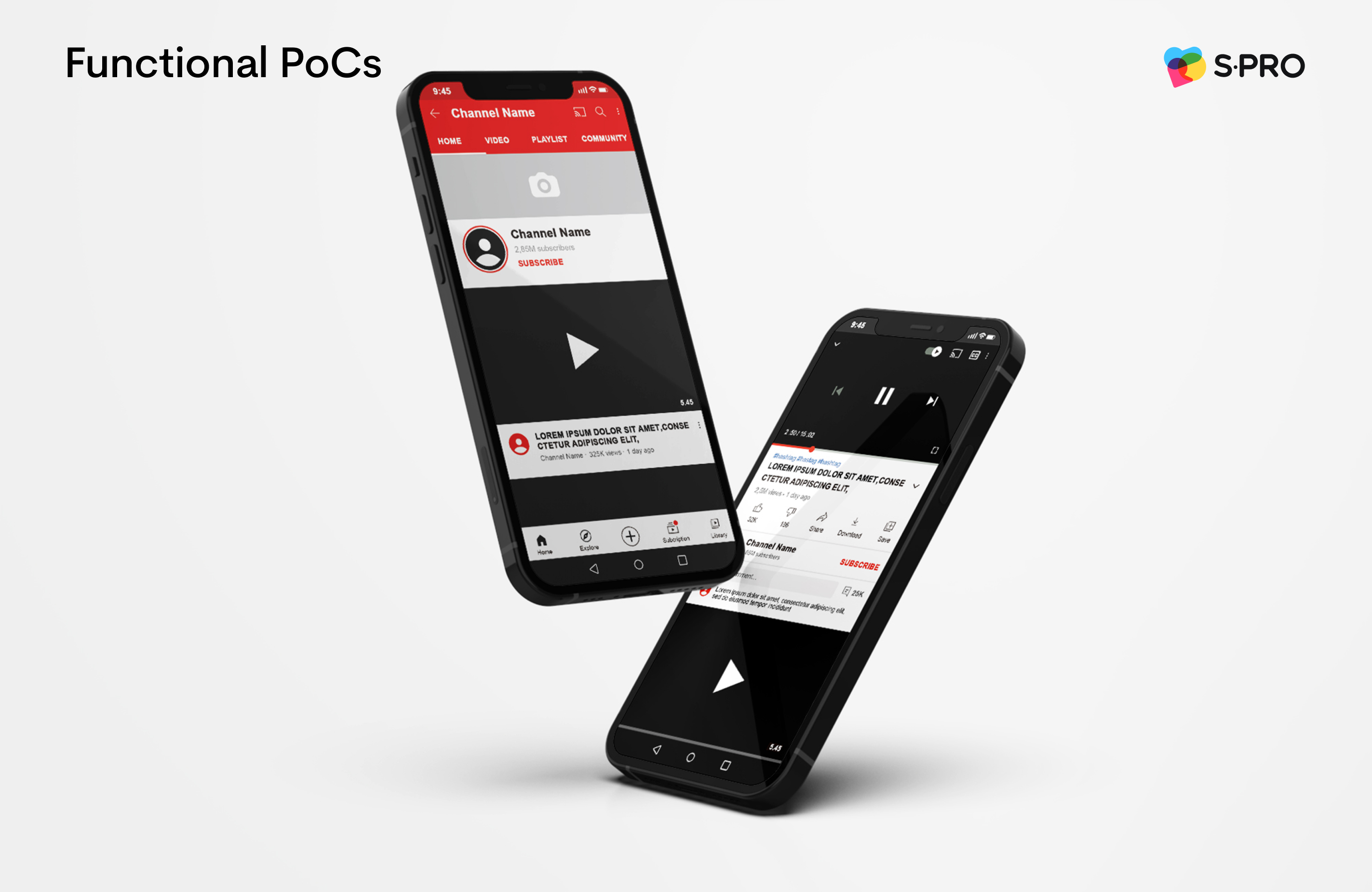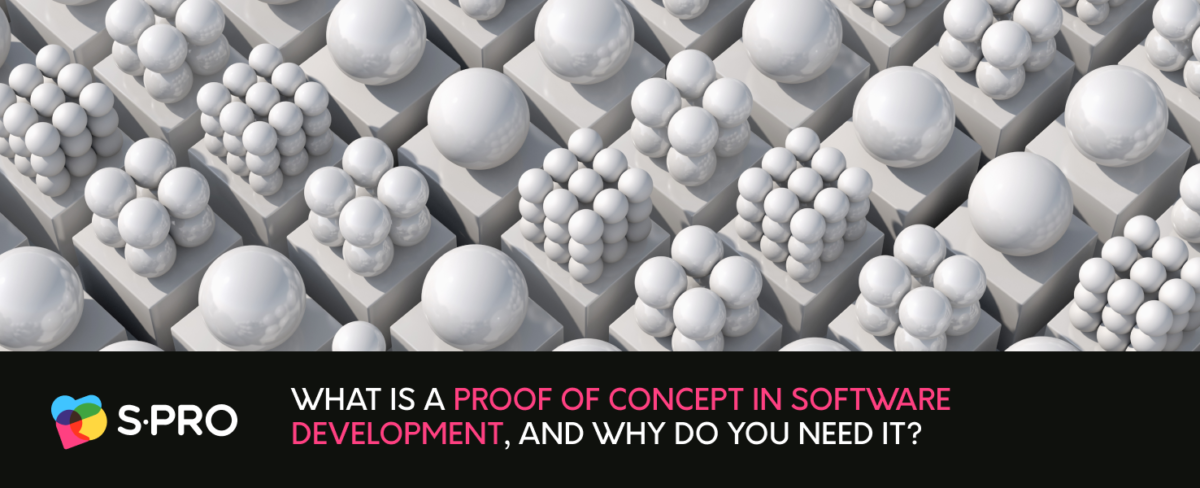The lack of market demand causes around 35% of startup failures. How to avoid common mistakes and save time, money, and reputation? For that, many companies apply the Proof of Concept (PoC) during product development.
You’ve definitely heard the term. Yet, some may confuse a PoC meaning with the concepts of a Minimum Viable Product or a Prototype, especially when a "Functioning PoC" means a prototype. Thus, PoC development can mislead even with its definitions.
After years of working closely with new and existing projects, S-PRO has top-notch expertise in PoC technology, ready to level up your business. That’s why we prepared this article for you.
Read further to find the answers to the most tangled questions about proof of concept development. What is Proof of Concept in software? What is PoC in software development? How to build it right?
If you have any questions about the PoC of your product, contact us today for a consultation to find out how we can aid our project.
What Is PoC?
Proof of Concept (PoC) validates the effectiveness and feasibility of a solution, whether it is a design, service, or application. For this reason, a PoC is crucial for the software development process. It pinpoints potential problems before they arise.
When to use PoC? Typically, it helps identify possible difficulties at the start of a project. Sometimes, however, a developer team decides to alter its plans. Then, a PoC also comes at hand.
Why Do You Need a PoC in Software Development?
Many industries use PoCs in their product development process. It covers software development, project management, business development, etc. In all cases, a PoC is used for specific reasons, which are the same in all fields.
Feasibility
Is the product a good idea? Is it feasible? The sooner you know the answer to this question, the better for your product.
Non-feasible products have so-called "False Values". They emerge from mere assumptions instead of proven concepts that the product is wanted and needed on the market. A robust PoC requires knowledge of audience and market needs.
A software development PoC helps owners understand the pros and cons of the product idea, as well as its limitations. Through PoC technology, owners consider various options. Thus, they can head in the best direction for software development.
Suitability
PoC in software shows which method best achieves a specific result or solves an issue. It also prompts which technique or method is the most suitable for each particular task.
Furthermore, testing a product in the PoC environment helps organize the whole software development process. By breaking the task into smaller steps, you can ensure that the deadlines are met and keep all functions under control.
Resources
With all the information from the PoC environment, you can plan and budget for the required resources. Then, by understanding the possible problems and technology needed, you can make informed decisions about where to extend or cut resources accordingly.
In addition, you may need to convince potential stakeholders about the validity of investments. A well-designed PoC in software will provide direction and purpose, whether from scratch or expanding an already operating system. A PoC is often the best way forward when presenting ideas for clients or partners of untried theories.
What Are the Types of PoC?
Software development can have various forms. Similarly, PoC software engineering takes different shapes. The choice of the type depends on the objectives and scope of the project. It can be clickable and non-clickable designs, beautifully designed mockups, or mind maps.
(Non)Clickable Wireframes

Such a sketch allows you to go through the entire product and understand how it will look. It covers text, buttons, and the arrangement of elements. This way, the client will understand how much they like it and what to add.
Mockups

Mockups are mostly non-clickable wireframes. However, sometimes they can also be interactive. They are already beautifully drawn and often well-presented in the required design.
Mind Maps

This is another type of PoCs we use. Like mockups, mind maps can be shared with the client to pitch the ideas to investors or check the hypotheses. But they do not give a comprehensive view of how the product will look.
Functional PoCs

In some cases, we have to test the tech side of the product with PoC technology without spending much time on design. For example, for one of the projects, we needed to check if we could build something similar to Apple Pay. Our team created a simple, functional application sparing little attention to the design or wording. Thus, we proved the idea's feasibility from the software engineer’s standpoint.
No matter what type of PoC you need, S-PRO can help. Reach out to us, and our manager will contact you within 24 hours.
What Is the Difference Between the Proof of Concept (PoC), a Prototype, and a Minimum Viable Product (MVP)?
These three terms often confuse. Let’s dot the i’s and show what helps us tell them apart. Each of them has its specific role in the software development process. Yet, all play their part in product testing. So, let's dive into the details.
Proof of Concept (PoC)
Whereas an MVP is already a product, a РoC meaning is a test version for a demo.
A PoC may not have optional functionality. For example, login and registration features can be absent. Since these elements are vital for functionality, the MVP should include them. But PoC development, instead, does not need them to test. Therefore, if we create a technical PoC, we generally do one flow.
For example, we have a task to scan a QR code. We make an application showing us the information after scanning the code. We focus on one flow: opening a camera, highlighting a QR, catching a QR, validating this QR, and then showing a screen with desired product information. No login and registration are required. If there is nothing else except this main flow, it is called a technical PoC.
In any way, there is no need to waste time on aesthetics that MVPs need. As Proof of Concept development is the first stage in designing or building a new product, we are not looking for all the bells and whistles. Instead, we look for the bare bones of a project and keep the costs to a minimum.
This is what we call the wireframe model, not a fancy model. It does not have features to “wow” our users. All it needs is the functioning parts that produce the expected results. PoC software engineering tells us if the theory is possible.
Prototype
The PoC gives us a simple answer, such as yes or no, to the question, "Can we build this specific model?" The prototype asks us: "How should we build it?".
After the Proof of Concept development, we have a clear, proven idea. Then, we can move forward — considering how to create the product. At this point, the show's stars, the UX designers, enter the stage. They will guide the project, focusing on the users and their interaction with the product.
The difference between the PoC services and the prototype building is the following: the PoC is more like the "Back-end team," while the prototype presents the "Front-end."
Minimum Viable Product (MVP)
The MVP provides the users with the essential product functions in a user-friendly way. Realistically, we can consider the MVP a presentable or polished version of the prototype. That is, it unites everything we can confidently show to the world. However, both the prototype and the MVP would not exist if it were not for PoC software engineering.
Only at this project stage can we present anything to the market. This is the earliest version of our product that the public can see and interact with.
We can prepare for the product launch when we have received all the feedback required and all is well with the MVP. If you want to find out more about MVP, read our article on how to build it.
PoC Meaning in Software Development: Moving from a PoC to an MVP
Each organization has its systems and alters them as needed for each project. However, there are some areas all PoCs need to cover to answer basic questions.
Prove the Need
There is little sense in creating a product that is not needed. Therefore, this step aims to create a list of the customers' specific needs, which the software in development addresses.
Data is essential. Talking to the target audience and analyzing its inputs, as well as market information, helps clarify knowledge. By doing your homework well, you’ll remove possible misconceptions about the audience and its needs.
It isn't necessary to target all possible test cases in one PoC, as these can be covered individually. However, target the main concerns for a reasonably comprehensive PoC development.
Create a Roadmap
The journey from PoC development to MVP depends on many factors that need recording. Consider a roadmap as a blueprint or template for your development process. Include suggestions and ideas that concern building the product in this map.
Map the Pain Points
This step explores ways to address and solve the issues or pain points discovered in the previous step. There will probably be multiple solutions to any given case, but the main idea is to prioritize and identify the most suitable ones.
Always get as much feedback as possible to understand and interact with potential users. Furthermore, recording your metrics is vital to any PoC software engineering. This information lets you make data-driven decisions when setting performance goals and KPIs.
PoC testing is conducted by questioning and observing the market need and customers' pains. After that, you have a clearer understanding of the solutions you wish to add to the final product.
Create a Prototype
When the previous criteria are identified, it's time to create a prototype. Share it with those involved in the initial discussions to ensure added value and continuity.
Also, a prototype helps you assess how intuitive the specific aspects are. Additionally, you will notice whether there are any unforeseen issues or required features.
Moreover, this is the first time the client and a limited user group get access to a future product. Their feedback enables us to monitor any progress in testing. Besides, you can compare the expected and actual outcomes before the following step.
Build an MVP
An MVP is a fully functioning product. It contains all the vital functions to allow the product's initial launch to the public. The primary purpose of an MVP is to test its usability, functionality, and marketability. It opens the iterative stage of development.
This action extends to a much wider audience and provides vital feedback. What does it give you? Enough information to decide whether the current product iteration suits the user and stakeholders.
Wrapping Up
It is hard to overestimate the PoC meaning in software development. Many businesses fail as they ignore the importance of PoC software engineering. Companies tend to jump to the MVP without the initial stages and go straight to the launch. As a result, they don’t understand why the product succeeds or fails.
PoC development is a fundamental tool for software engineering. It provides the basis for the success of a product, as PoC tests an initial idea. Thus, project managers can accurately identify potential risks and obstacles.
Furthermore, a PoC also helps project managers to understand the possible scalability. At the same time, it reveals the potential scope of a project over its life cycle, whether it is feasible or attractive for investing.
Contact us today to discover how S-PRO can help to develop professional PoC services for your startup or existing project. Rely on our skilled team to lead your product to future success.





